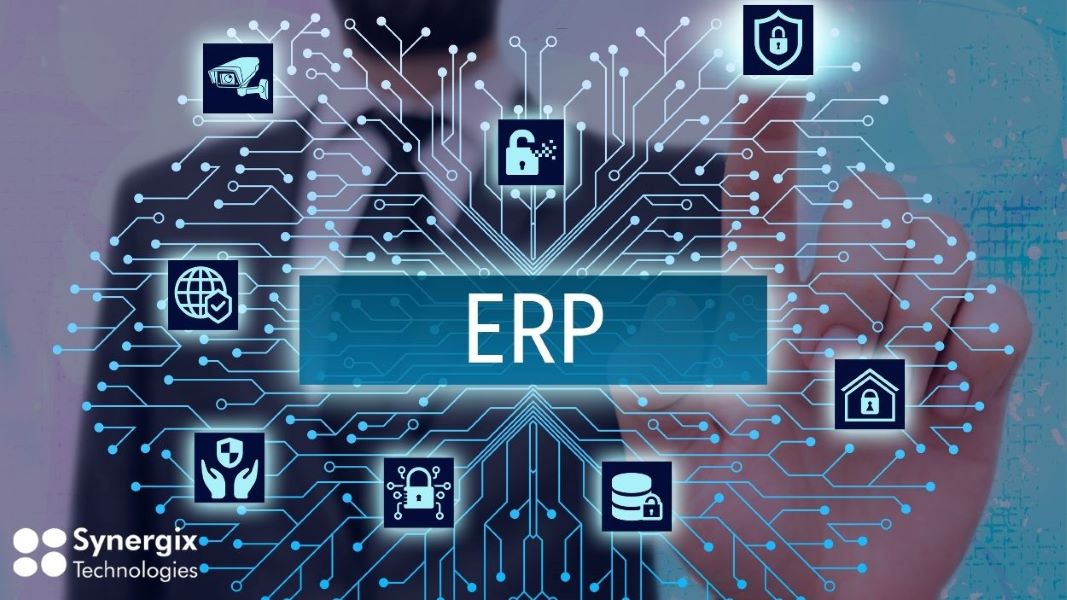 15 May 2025
15 May 2025

Within the complex modern business technology ecosystem, Enterprise Resource Planning (ERP) stands as a cornerstone, integrating key functions like finance, HR, supply chain, manufacturing, sales, and CRM. While users interact with interfaces and modules, the ERP system database operates behind the scenes as the engine driving integration and real-time insights.
In this blog, we will discuss about the critical role of the ERP database as the single source of truth, its features, the vast data it holds, underlying technology, database management, common challenges, and significant business benefits. Let our ERP experts walk you through the way to Understanding the database and unlock the true power of your ERP investment.
Table of Contents
What Exactly Constitutes an ERP Database?
A ERP system database is a highly structured repository of a large amount of data generated from all kinds of business, e.g. financial, stock, sales and human resources happens to be just your brother-in-law’s family pet since moving to town.Now, when an outbreak occurs no one will be able to escape the consequences.Instead, everyone is united in coming up with innovative answers–for instance by broadening their knowledge base and working together regardless of departmental boundaries. And equity will be served to produce even greater benefits.
ERP solutions have strong database architectures SaveWorkkeep to ensure that data streams manifest quality. This enables organisations with processes in place to make innovative choices about how they run their business even when the environment around them undergoes sudden flux. Provide information regarding why this is so important – some aspects of the topic are important but are not covered Further refinement and applications should be attempted from time to time.
To learn more about how ERP systems integrate business processes, check out our blog on Complete Guide to ERP System Integration In 2025
The Indispensable “Single Source of Truth”
One of the most important values ERP systems brings to a given company is the establishment of “Single Source of Truth” (SSOT). When there is no integrated system, it is common for data to be siloed and discordant. Sales would hold the customer records in CRM, accounting holds the billing addresses in a finance system, and the warehouse would keep the shipping details apart. Accidents are bound to occur, and confusion, errors, and sloppy reconciliation processes follow as a result.
The ERP database resolves this by integrating all applicable business data in one centralised environment. When an address for a customer is updated in the CRM module, only one entry is made in the database and, therefore, the same, updated information of that customer becomes instantly available to the finance, sales, and shipping modules. This way, every department, as well as every user, works with the exact same, most current information.
This one source of the truth is irreplaceable in making decisions, reporting or comparing functional efficiency. It gives a stable foundation around which the entire business runs, so everybody is using the correct, accurate information.
Key Components of an ERP Database
Learning the basic developed units for the ERP database is essential for anyone who is keen to capitalise on ERP system potentialities. Key components include:
- Data Tables: Break down data into rows and columns as depicting certain business entities with their attributes.
- Relationships: Relate data from a table to another table, maintain the integrity and consistency of data.
- Indexes: Increase the speed of operations to retrieve data from a database table.
- Stored Procedures and Triggers: Automate the routine processes and ensure the business rules are used in the database.
- Views: Send out customised presentations of the data for varying users or applications without making changes to the underlying tables.
Why the ERP Database is Crucial for Businesses
The ERP database is not just a storage facility, it is a strategic tool that helps achieve efficiency, scalability, and agility. It is essential for the contemporary organisations for the following reasons:
Seamless Data Integration
Centralising data eliminates the need for a transfer of data between departments, thus reducing errors and saving time. This is served by the ERP database. For instance, when sales order is entered, the same is reflected in database and simultaneous entries are made for inventory, accounting and for shipping so that all team players have the same information to work on.
Enhanced Decision-Making
Its managers have real-time access to data, allowing them to follow key performance indicators (KPIs), trace sales trends, and predict demand without worries. ERP databases underpin business intelligence tools, which are dashboards and reports that give operational insights.
Scalability for Growth
As the businesses grow, the demands for data increase exponentially. A strong ERP database grows easily, capable of processing bigger transactions without losing any performance. This scalability is very important for companies who expect high rate of growth or going into new markets.
Customisation and Integration
The ERP databases can be customised for specific business requirements e.g. add new fields or even integrate it with third party applications such as CRM or e-commerce platform. Knowledge of the database structure gives the businesses the power to set up their ERP system for optimal efficiency.
Challenges in Managing ERP Databases
Although ERP databases bring great benefits to companies, there are challenges that businesses have to overcome if they are to maximise the value of the databases.
- Data Security : Since the ERP systems put sensitive information under one roof, the ERP databanks become soft spots for the cyberattacks. It is necessary to put strong security in place, like encryption, access control to safeguard the integrity of data.
- Performance Optimisation: If large datasets are not properly indexed, queries can be slowed down. Routine maintenance including updating the indexes and optimising the queries guarantees better performance.
- User Training: Workers require training in working with the ERP database effectively. Engagement of users at the implementation stage can enable adoption and satisfaction as discussed in ERP success factors studies.
Best Practices for Managing ERP Databases
To maximise the benefits of an ERP database, organisations should adhere to the following best practices:
- Regular Maintenance: Conduct regular cheques and updates to make sure that the database runs efficiently.
- Data Security: Establish strong measures of security such as access controls and encryption to secure sensitive information.
- Backup and Recovery: Create backup and disaster recovery plans that will ensure data loss is prevented.
- Performance Monitoring: Monitor the performance of a database and optimise queries to increase speed and reliability.
- User Training: Train users about the best practices to be followed with reference to data entry and retrieval to ensure quality of data.
The Future of ERP Databases
ERP databases also change with the advancement in technology. Evidently there is a shift towards Cloud based ERP systems such as those provided by Synergix Technologies as it is affordable and can be accessed anytime anywhere. Also, improvements in artificial intelligence (AI) and machine learning are augmenting ERP databases with predictive analytics and automation, allowing the businesses to foresee the market trends and optimise procedures.
Investing in a state-of-the-art ERP database helps to future-proof business and stay ahead of the competition. For more information on cloud-based ERP solutions, check our blog at Local ERP vs Cloud ERP: Which is Right for Your Business?
Conclusion
The ERP system database is the heartbeat of any ERP solution, enabling seamless data integration, real-time insights, and scalability. By understanding its structure and functionality, businesses can unlock the full potential of their ERP system, driving efficiency and growth. At Synergix Technologies, we’re committed to helping organisations harness the power of ERP databases to achieve their goals.
Ready to optimise your business with a robust ERP solution? Contact Synergix Technologies today to learn how our ERP systems can transform your operations. For more insights.









